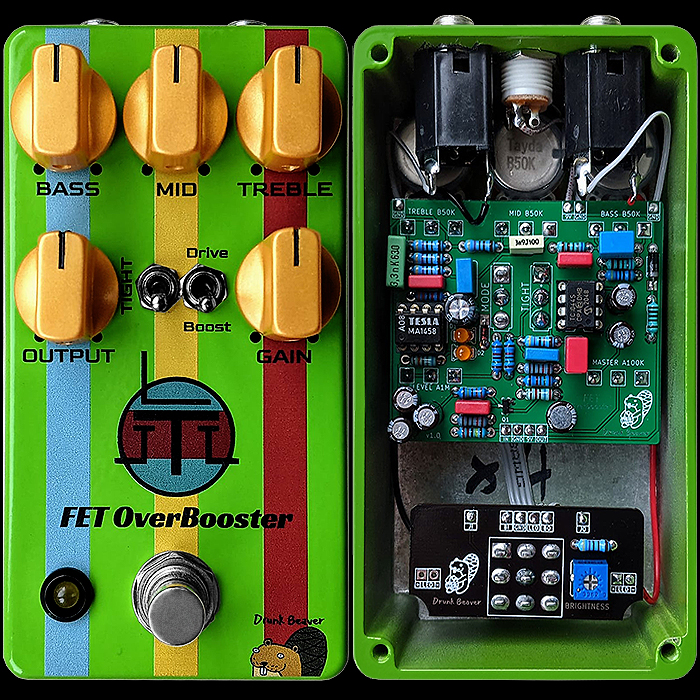jessemhopkins
Member
There are a few FA-1 boards out there, none for the clover though with the added midrange pot.
Upvote
26


Just found the post by accidentWell, I'm going to link the comparison video, too:
Clover Manual:
Dropbox - File Deleted - Simplify your life
www.dropbox.com
Of course in the Clover IC could be for the charge pump, I thought about it.
A clue of the charge pump could be this indication on the manual: «Do not use more than 9V DC.» But it's true that is just a generic instruction of the most 9v pedal.
Actually, I guess the second IC in the Drunk Beaver is a TC1044S, now I can read it, even if I can't see any useful didoes for a charge pump, except just the black one. And a Q1, is that two diodes smd package?
Anyway, the Clover is one IC more.
Don't forget the Clover has an XLR output, too, with a ground lift, so maybe that needs an extra gain stage.
«GROUND LIFT - Dip switch on the left side of the pedal. When using the XLR output, if you experience a hum you can switch on the Ground Lift to remove the hum.» It's mentioned just "When using the XLR output", so maybe is it just for that?
«46mA consumption». Is that too much?
I can't find the consumption of the Drunk Beaver OverBoost.
The big mystery remain the swicthable mid control.
Anyway, at least listen the demo on youtube, there's no much difference in the sound with the Drunk Beaver pedal
The downside is some are Side jacks with the para having dipswitches on top!Oooo I like the ones with full para mids!
AND MIA (made in Australia!)
Very cool, but I (quietly) have a problem with clones/variants that include MODEL NUMBERS OF THE ORIGINAL. That could easily be considered a trademark/registered circuit number by Roland/Boss' lawyers.This chap does a number of FA-1 type pedals from stock build to Parametric EQ, leaves all the other clones redundant!???
Uses Rare Original OpAmps!
Look at the Prices!!!
That's all fine and good. I'm not saying anyone is a bad person, or I'm starting a protest against them or anything.I agree but Boss hasn't produced it since 1984 so it's not like he is effecting their sales!
These have been available for a while & he would have received something by now if there was an issue???
They have been indiscussions on TGP for a year!
